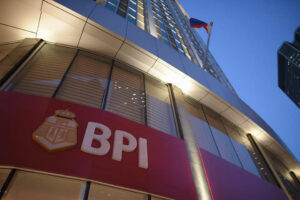PHL seen to expand 6.5% this year

By Luisa Maria Jacinta C. Jocson, Reporter
THE PHILIPPINES will likely grow by around 6.5% this year, even with a potential global economic slowdown, Finance Secretary Benjamin E. Diokno said.
“That’s still one of the highest if not the highest growth projection in the Asia-Pacific region,” Mr. Diokno said in a statement that quoted his speech at an event in Davos, Switzerland.
Economic managers are targeting 6-7% gross domestic product (GDP) growth for the Philippines in 2023.
Forecasts given by the World Bank and the ASEAN+3 Macroeconomic Research Office (AMRO) showed the Philippines may post the second-fastest GDP expansion among key Southeast Asian countries this year, after Vietnam. AMRO sees the Philippines’ GDP growing by 6.2%, while the World Bank expects 5.4% GDP expansion.
Mr. Diokno said the economy in 2022 likely expanded “much faster” than the government’s 6.5-7.5% goal.
He noted manufacturing sector growth, low unemployment levels, and a stable banking system will help the economy withstand external headwinds.
“Further, opening economic sectors to foreign equity, improving the ease of doing business and allowing for modern transformative industries to take root and grow will further sustain the economy,” he added.
Mr. Diokno said that the government is also planning to boost investments through public-private partnerships (PPPs), noting that it plans to spend at least 5-6% of GDP on infrastructure.
Due to current challenges, the Philippines is taking steps to launch the Maharlika Investment Fund (MIF), the country’s first sovereign wealth fund, Mr. Diokno said.
“The fund, which will be established in keeping with the highest standards of accountability and sound fiscal management, aims to diversify the country’s financial portfolio,” he said, adding that he would discuss the MIF during the World Economic Forum (WEF).
The House of Representatives in December approved the bill creating the wealth fund. It is currently part of the Senate’s priority bills this year.
IMPACT OF GLOBAL RECESSIONWhile the Philippines may be among the least affected by a potential global recession this year, analysts said it may still find it difficult to meet the government’s 6-7% growth target.
“The Philippines would be least affected by a global recession because it has the lowest export-to-GDP ratio compared to other Southeast Asian economies. This won’t mean we will remain unaffected because exports would also suffer and the trade deficit will widen, but the negative impact of a global recession won’t be as much,” Calixto V. Chikiamco, Foundation for Economic Freedom (FEF) president, said in a Viber message.
The World Bank expects global growth to decelerate sharply to 1.7% this year, reflecting worsening financial conditions, policy tightening and impact of the Russia’s invasion of Ukraine. Negative shocks, such as higher inflation, tighter policy and financial stress, may push the world economy into a recession, the World Bank said.
“Fortunately for the Philippines, it isn’t as reliant as its peers in Southeast Asia in terms of trade, so the impact of a potential global recession this year will be felt less acutely domestically,” Pantheon Chief Emerging Asia Economist Miguel Chanco said in an e-mail.
The Philippines is a net importer, with its trade balance primarily in a deficit for more than two decades. The last time the country was a net exporter was in 2000, when it had a trade surplus of $3.587 billion.
Mr. Chikiamco also noted remittances from overseas Filipino workers (OFWs) remain resilient and “can’t be dispensed with even in a recession.”
However, the Philippine economy is expected to feel this year the delayed impact of the Bangko Sentral ng Pilipinas’ (BSP) recent aggressive tightening.
“I still think that the economy will struggle to hit the government’s 6-7% target, partly because the lagged damage caused by the BSP’s overly aggressive rate hikes in the second half of last year will start to surface more noticeably in the economic data,” Mr. Chanco said.
“Moreover, the resilience exhibited by households last year will be hard to replicate, as it was down to an unsustainable surge in consumer credit growth, as well as a renewed reliance on still-thin household savings,” he added.
The BSP has not ruled out further rate hikes this year after raising the benchmark rate by a total of 350 basis points last year to tame inflation.
Mr. Chikiamco likewise said the Philippines will likely grow below the government’s target amid rising food prices and food insecurity.
Rizal Commercial Banking Corp. Chief Economist Michael L. Ricafort said that GDP growth will likely range between 6% and 6.5% amid a heightened risk of a recession in the United States.
“This would realistically lead to slower global economic growth and recovery in terms of reduced global exports, investments, employment, and other economic activities,” he said in a Viber message.
The Philippines may have performed better than expected in 2022, but growth momentum appears to have waned in the latter part of the year, Mr. Chanco said.
The economy expanded by 7.6% in the third quarter of 2022, bringing the nine-month average to 7.7%.
UnionBank of the Philippines, Inc. Chief Economist Ruben Carlo O. Asuncion said there is heightened uncertainty surrounding global economic prospects, particularly the impact of China’s reopening.
“One glaring challenge is, once the reopening moves on, China domestic demand is seen to accelerate and result to higher prices of global oil, not to mention other commodities that are connected to China’s economy like coal, rice, etc.,” he said in a Viber message.
Mr. Chanco said the government should focus on its fight against inflation, which averaged 5.8% in 2022. The BSP expects inflation to ease to an average of 4.5% for 2023, and 2.8% in 2024.
“At most, the government should continue to consider inflation-fighting measures to help cushion private consumption, including measures that may be particularly unpopular, such as lowering trade barriers on key commodities,” Mr. Chanco said, adding that allowing more imports would help ease supply shortages.
The Philippine Statistics Authority (PSA) is set to release fourth-quarter and full-year 2022 GDP data on Jan. 26.




